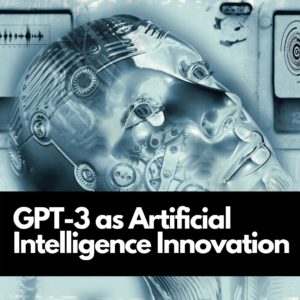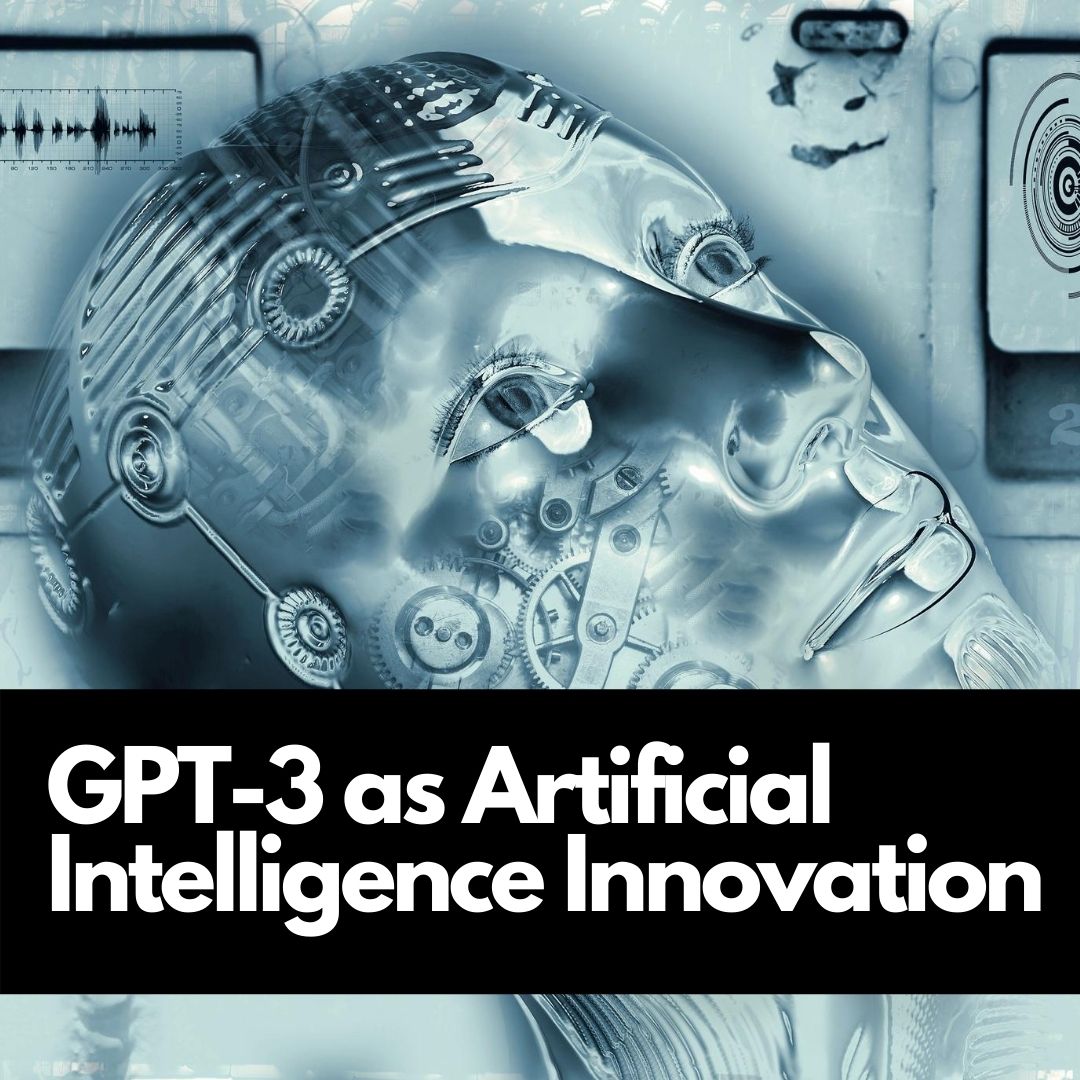Generative Pre-trained Transformer 3 or GPT-3 is an AI based language model to produce human like text. This discussion is around GPT 3 basics and explore the possibility of obtaining patent protection for AI based inventions. The primary issues involved in AI patenting are subject matter eligibility as per patent laws and ownership of patents filed for inventions developed by AI tools. Technology companies and startups working with Artificial Intelligence and Machine Learning based innovations usually begin the process by filing one or more provisional patents along with the fundraising process. Subsequently, once funds are raised, such provisional patents are converted into non-provisional patents by drafting strong set of patent claims.
Artificial Intelligence is the science of making machines smart, using algorithms to allow computers to solve problems that used to be solved only by humans. Artificial Intelligence already powers search engines, online shopping recommendations, and digital assistants. Radiologists can use AI to calculate the exact shape and volume of tumours. Astronomers use AI to find and evaluate exoplanets in distant solar systems. The possibilities of AI are endless, from fraud prevention to developing new strategies to address climate change. Artificial Intelligence analyses a large amount of data to learn to complete a particular task – a technique called machine learning.
Artificial Intelligence is the ability of a computer to understand what an individual is asking and then infer the best possible answer from all the available evidences. Artificial Intelligence is also defined as a system capable of perceiving its environment and then reasoning, acting, learning, and cooperating to achieve an objective. An individual can think AI like Siri or Google on his iPhone. AI like Siri, and Amazon Echo can listen and understand human being command. Other AI can observe the scene and describe what they are saying. Narrow AI is designed to specifically do tasks like winning a chess game General AI can do reasoning, abstraction, and generalizations way beyond their programming. AI will become the most important human collaboration tool ever created that amplifies the human being’s ability. AI provides a simple interface to all exponential technologies.

Innovation is the process of developing better solutions from existing inventions and ideas. It is the validation and exploration of ideas that others may have missed, rejected, or long forgotten. Innovation connects the dots to transform those ideas into valuable products or services that can be used in everyday life.
The third generation of the machine learning model is a new AI interactive tool which is called Generative Pertained Transformer-3 (GPT-3). GPT-3 comes from a company called OpenAI. OpenAI was founded by Elon Musk and Sam Altman. Elon Musk is a prolific entrepreneur and any individual may be familiar with him from SpaceX and Tesla, and Sam Altan was one of the founders of Y Combinator, a very famous startup accelerator. Both of them invested over billion dollars in OpenAI to advance the state-of-the-art artificial intelligence and made sure that artificial intelligence is used for the betterment of mankind. GPT-3 is a much bigger and better version of its predecessor GPT-2.
GPT-3 language model that studies and researches English sentences and vast data bank, and it uses high powerful computer models that are called neural nets in technical terms and, after that, it spots pattern, and it learns itself how to learns how to operate language and make its own rule. GPT-3 trained itself with 175 Billion parameters and is trained on 45 TB of text sourced from all over the internet that also involves Wikipedia. With the help of these data, GPT-3 learns the statistical dependencies between different words that are encoded as parameters in its neural networks. GPT-3 have the capability of writing essays, stories, blog posts, tweets, press releases, business memos, and technical memos. GPT-3 has the ability to imitate the styles of different authors and compose music. It is good at answering the questions but requires basic comprehension and translate languages.
GPT-3 is recognized for its language capabilities, and when GPT-3 is properly primed by the human, it can write creative fiction. Researchers say that chatting with GPT-3 feels remarkably like chatting with a human. GPT-3 can also generate a functioning code. GPT-3 can also compose thoughtful business memos. Researchers say that they fed GPT-3 with the first half of how to run an effective board meeting, and in a few minutes, it wrote up a three-step process on how to recruit board members adding up to any essay.
GPT-3 is an extremely useful language algorithm that utilizes machine learning to interpret text, answer questions, and accurately compose text. GPT-3 focus and observe a series of words, and text, it focuses on those examples to deliver a unique output, like an article. Open AI is releasing their new AI model that allows an individual to ask questions in English. It allows an individual to generate code from a question and find answers to questions in webpages without matching words and understand an individual’s intent in Excel and pull in data from the internet.
GPT-3 can completely revolutionize the language processing abilities of cognitive systems. The word AI gets closer to human intelligence day by day. GPT-3 has an important role in understanding human intellect and then trying to displace it. This technology is still in the developing stage, and there is a lot of scope for improvement.
GPT-3 is a deep learning model of natural language that has 175 billion parameters and has 100x more than the previous version GPT-2. GPT-3 is a model that pre-trained on nearly half a trillion words and successful in achieving a state-of-the-art performance on several NLP benchmarks without fine-tuning. GPT-3 is a language model that has the capability of predicting the likelihood of a sentence existing in the world. GPT-3 model architecture is a transformer-based neural network, and this architecture is the basis for the popular NLP model BERT and GPT-3’s predecessor, GPT-2.
GPT-3 is overly exciting for machine learning practitioners. Models such as BERT require an elaborate fine-tuning step where an individual can gather French-English sentence pairs to teach it how to do the translation. An individual must find a large training dataset that can be cumbersome or sometimes impossible to depend upon the task. But for GPT-3, an individual doesn’t need to do any fine-tuning step.
GPT-3 can apply for all tasks without any gradient updates or fine-tuning. GPT-3 performs well on many NLP datasets. NLP datasets involve translation, question-answering, and cloze tasks that require domain adaption such as unscrambling words, using a novel word in a sentence, or performing 3-digit arithmetic. GPT-3 can generate new samples of new articles that human evaluators have difficulty in distinguish from articles written by humans.
GPT-3 can do anything which other models cannot capable of doing because GPT-3 can perform specific tasks without any special tuning. GPT-3 can become a translator, a programmer, a poet, and a famous author.

